April 24th – May 29th
Kara Rooney and Néstor Quiñones
Curated by Bárbara Perea (MX) and Charlotta Kotik (NY).
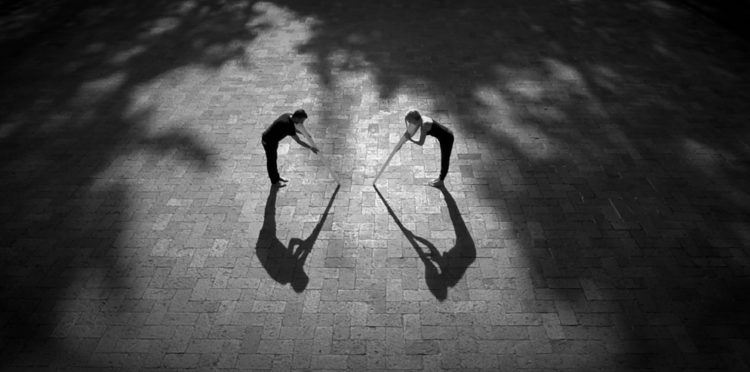
April 24th – May 29th
Kara Rooney and Néstor Quiñones
Curated by Bárbara Perea (MX) and Charlotta Kotik (NY).
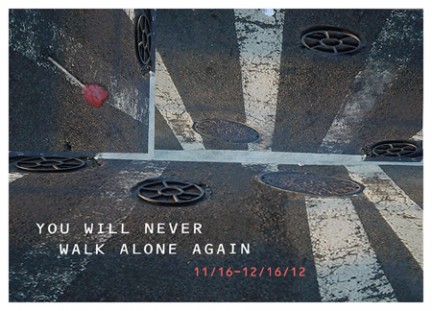
November 16 – December 16
Artists: Adan Vallecillo, Noha Klersfeld, Kristine Servia, Javier Bosques, Klimentina Jauleska, Victor Sosa, Tamas Veszi, Karlo Andrei Ibara
Curator: Carlos Rodríguez
“Upon those who step into the same river, different and again different waters flow.” Heraclitus BC 475This quote, which is the basis for the current show at Radiator gallery, suggests that all things are ever changing, transforming and never stagnant in the state of actuality. Everything in the natural world contains opposition, and in that struggling coexistence movement appears. The concept of constant movement through opposite forces enlightened the path of knowledge of the ancient Greeks to understand the world in its nature. It was later applied in modern philosophy to examine class struggle and contradictions in society.The transition of one quantity into another, and the notion of a phenomenon that existed but remained unnoticed because it appeared as waste or as too brief a moment in life, define the aesthetic in this exhibit. Through the use of everyday objects, recycled materials, video recording and collage, the artists find a common denominator in the production of art concerned with mutability as a natural phenomena. Working from Honduras, New York and Puerto Rico they operate as nomads of circumstance, strolling through their immediate environment as gatherers of raw material. By exploring the circularity of time and the eternal return they engage in the re-enactment of socially constructed myths through ritualistic actions and mundane objects. Their work resembles the search for a true reality, which is hidden in its gradual succession toward appearance. Perhaps the purpose of this process is to suggest a new path, a walkable line between the struggle of opposites, sustainable, as it is cyclic and contemplative as an art form.In the video installation LSC Noah Klersfeld depicts a chain-link fence that has undergone a temporal reconfiguration, weaving together the activities taking place at a busy traffic intersection during the morning commute in New York City. In his works he acts upon the architectural patterns that bear passive witness to daily ritualistic behavior.The idea of distortion between materiality and Illusion is a key aspect in Klimentina Jauleska’s work. In the piece Never Getting There she uses a TV screen to create an optical effect of a pair of shoes placed behind it. The viewers can move around the piece, experiencing a fully transformational environment always animated by their walk.Kristine Servia created a series of drawings, Reciprocal Lines, as she talked back and forth with a curator in Puerto Rico from her studio in Chicago. Kristine was giving him instructions in order to produce a piece for particular show. The drawings are an intricate recording of the dynamic among curator/re-creator, artists and visitors to the space during the opening.In the two-channel video White Balance Tamas Veszi combines the circular motion of a bubble machine with a moving bicycle. The hypnotic sound of the bicycle and the short loop of the video refer to the calibration of both the physical and psychological state of engaging with the city and its challenges.Adan Vallecillo’s work Topography XV depicts an elastic map of the city of Tegucigalpa in Honduras, employing overly-used inner tubes of car tires. Adan is interested in registering time and vulnerability through the wear and tear of the material by examining the spatial relationship in maps of immeasurable cities and languages.I’m feeling Lucky is a piece made of five digital prints based on Google Search screen shots of Puerto Rico. Through the formulation of basic questions Karlo Andrei Ibarra investigates the way we function, according to the quick responses of a machine.Victor Sosa shows a series of collage drawings on shipping envelopes, and newspaper cutouts depicting protests around the world. The fragmentary quality of his work, similarly to Klersfeld’s LSC, refers to temporal reconfigurations in the urban landscape.In two short videos – Plastic Bag, shot in the lower east side of Manhattan, and Iris, recorded in his native town of Rio Grande Puerto Rico – Javier Bosques proposes simple gestures that, through repetition, invite the viewer to contemplate the phenomenological narratives of urban and rural landscapes.Curator Carlos Rodriguez is an artist and musician currently working in Brooklyn, New York. In 2003 he was awarded the Skowhegan School of Painting and Sculpture Residency. Carlos has a combined BFA from the School of Fine Arts of Puerto Rico and The School of the Museum of Fine Art in Boston. He also earned an MFA from Brooklyn College in New York. This is his second curatorial project.
ARTWORKS:
EXHIBITION:
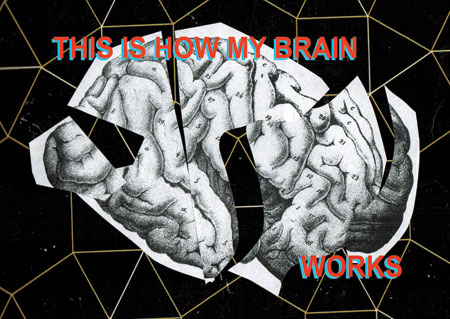
September 8 – 30, 2012
Opening reception: Friday, Sept. 7, 6:00 – 8:00 pm
Donovan Barrow, Brian Belott, Natasha Bowdoin, Maximus Clarke, Floto+Warner, Sara Klar, Todd Knopke, Michael Lee, Elisa Lendvay, Abraham McNally, Andrew Mount, Ryan Sarah Murphy, Francesca Pastine, Javier Pinon, Leslie Siegel
Curated by Michael Lee
Radiator Gallery is pleased to announce the opening of its sixth show This Is How My Brain Works, a group exhibition that inaugurates the gallery’s second season. With over 30 works made by sixteen artists, the show examines the practice of collage through its many iterations and permutations ranging from works on paper to artist books, photographs, sculpture, textiles, digital projections and video. Through the presentation of visually diverse but not conceptually disparate works, the show helps define collage as both a working method still robust at the turn of the 21 century but more importantly as a manner of processing information either willfully or uncontrollably. The show’s title is a comical send-up of the precognitive jumble that is the necessary basis for the eventual creation of meaningful logic in the human brain.
Whether culled from magazine pages, scavenged from a neighbor’s recycling bin, plucked from the uncharted corners of the internet–or the physical corner of an urban street—this group of artists shares a love for material with a history. It can be cultural memory, what artist Christian Marclay describes as the “recognition of the source material with the pleasurable violence of transformation”, or it can manifest itself in the physical wear objects undergo with the passing of time. Whatever the case, the audience’s synapses begin to fire upon seeing this new/old thing well before a fully formed idea congeals in their heads. This is what all art is about. Collage highlights this fact.
The current generation of collage and assemblage artists is conversant in the standard and accepted history of the form as modernist paradigm par excellence. While this history obviously informs artists in this show, they have an advantage over their predecessors in contextualizing this working method as pre-modern far more easily due simply to their place in time. The palimpsests of ancient cities and the collage roots of film projection start to seem much closer when looked at from this perspective. What was once considered an artistic reaction to the specific age of communication can be seen in retrospect as a responsive method to connect art and the world in any age.
Michael Lee is an artist and teacher. This is his first curatorial effort. He was awarded a residency at Cooper Union in 2005 and at the Robert Blackburn Printmaking Studio in 2008. Michael earned a BFA in art history from The University of Texas at Austin and an MFA in painting from Hunter College in New York.
ARTWORKS:
EXHIBITION:
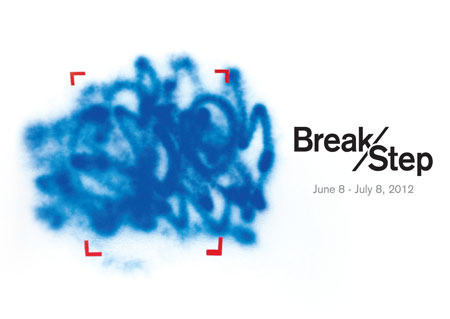
June 8 – July 8, 2012
Hours: Saturday and Sunday 3-6 pm
Curated by Eileen Jeng
Esther Choi, Rachel Hayes, Todd Knopke, Rena Leinberger, Stephanie Loveless, Alan Lupiani, Angel Otero, Ian Pedigo, Armita Raafat, Sara Greenberger Rafferty, Peter Soriano, Miryana Todorova and Sebastian Vallejo
Radiator Gallery presents Break / Step, a group exhibition featuring artists, currently based in the New York metropolitan area, whose works embody deconstruction in creation and vary in techniques. The imagery, act, and aestheticization of deconstruction play an important part in contemporary art, especially in process-oriented works that focus on materiality. The title refers to the movement when soldiers are instructed to “break step” when crossing structures, such as bridges, sensitive to resonance. The unified rhythm is intentionally broken to create a new sound and image.
In the matrix that composes our urban environments, buildings, land, and materials are constantly being developed or constructed, deconstructed, and reconstructed. Materials are recycled and reused, sometimes in creative ways. Land erodes, only to be built upon or preserved again. On a practical level, the infrastructure of cities, like New York, is constantly being reconstituted and the act of deconstruction occurs everyday — which begs the question: what is the nature of creation when construction and deconstruction are integral parts of the process?
Over the past four decades, contemporary artists have continuously challenged the medium utilized and process involved in works of art; narratives are broken, reinterpreted, and recreated. The artists in Break / Step use various traditional and innovative media, such as oil paint, fabric, plastic bags, glass, and industrial tubing. Surfaces are highly mediated. Images are re-construed, deconstituted, and altered. Sounds are fragmented. And public and private spaces are transformed. Chance, risk, and failure are evident and inevitable.
Abstracted in composition, these paintings, sculptures, photographs, installations, performances, films, and videos gain transformative dimensions. Out of disclarity and fragmentation, clarity and fresh perspectives re-form and develop. Some works produce a confounding affect, evoking a sense of tension. The artists examine aesthetic and formal qualities in their work, and some confront personal memories and histories as well as address cultural, social, and identity issues. Many dichotomies are suggested, such as permanence and impermanence, stability and instability, utopia and dystopia, reality and illusion.
Eileen Jeng is an independent writer and curator and the archivist at Sperone Westwater in New York. Her latest project includes Facture at AIRPLANE in Brooklyn among others. She was a research assistant in the Department of Contemporary Art at The Art Institute of Chicago, and she was involved in various exhibitions, including FLOAT at Socrates Sculpture Park in Long Island City in 2007. She earned an MA in arts administration and policy from The School of the Art Institute of Chicago and a BA in art history and advertising from Syracuse University.
ARTWORKS:
EXHIBITION:
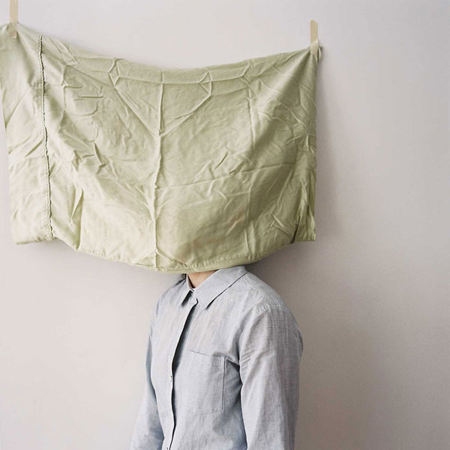
May 4 – June, 2012
Opening Reception: May 4, 6 – 9PM
Performance by Marni Kotak
Artists: Jeanie Choi, Camilo Godoy, Ted Kerr, James Richards, Aldrin Valdez, Sam Vernon Curated by Kris Nuzzi
Radiator Gallery presents Don’t Worry What Happens Happens Mostly Without You, an exhibition that explores the personal identities of artists Jeanie Choi, Camilo Godoy, Ted Kerr, James Richards, Aldrin Valdez and Sam Vernon, as they navigate through a world 
shaped by experiences of marginalization, silencing and difference. Whether speaking from their own life, recreating a historical memory or representing an underrepresented community, their work explores poetic and subtle ways to communicate issues of immigration, race, queerness and desire. Together they reveal the connections and differences between these loaded social issues and invite the viewer to share in their intimate experiences.
Artist Jeanie Choi explores our longing to confess the unspeakable. Through a series of collaborations, her work mediates a language through gesture and silence by examining the relationships between the confessor and the unreciprocated other. Using photography, video and performance, the reiteration of symbols and mistranslations never reach a conclusion, but reassure us that we are all trying to broaden the possibilities of truth between us.
Camilo Godoyʼs work is concerned with the politics of migration and citizenship in the U.S. by drawing upon the immigrant experience and playing upon narratives extracted from government documents. Through these intimate and powerful works, we hear their personal stories in deportation proceedings while addressing the quotidian struggles detained immigrants face in the U.S.
Ted Kerr’s piece FOR MYSELF IN THE SCENE is a poster installation comprised of 3 posters that are available for viewers to take. Through the work, Ted works to find himself amid socio-political-sexual anxieties produced in a time of ongoing AIDS, increased articulation of queer vs. LGBT politics, self-as-brand and digital culture. Using the poster, a format popularized during the AIDS crisis by Fierce Pussy, Gran Fury and General Idea, this work explores identity, activism and visual culture.
At the same time, James Richards’ poster Donʼt Worry is inspired by a quote by Joseph Albers and is part of an ongoing project by James and artist Matt Keegan. He works with existing text, accessible images and footage from disparate sources that he then remixes and returns back into the world.
Aldrin Valdez tells his story through an installation that is a personal mix of collage and family photos, piecing together memories of his childhood. He presents images of being a child in the Philippines, photos of his parents in the U.S. when he and his siblings had not immigrated to America yet, and collages that explore patterns and surfaces.
Exploring identity and memory, Sam Vernon creates fictional characters that symbolize parts of her culture while blending aspects of neo-futurism with stereotypes, images, spirits and ghosts. Her work takes the form of drawing, painting, installation, photography and printmaking to pay homage to the past, while addressing questions of postcoloniality, racialization, sexuality and historical memory. Her work reminds us that our ghosts and past histories always remain with us and at times are unsettling and challenge us to remember.
The exhibition is on view from May 4th to May 27th 2012. The opening reception will feature a performance by Marni Kotak. In conjunction with the exhibition, on Sunday, May 20th, there will be an event on deportation titled Retracing I.C.E., organized by artist Camilo Godoy. On Sunday, May 27th, there will be a salon organized by Ted Kerr and Kris Nuzzi titled I am not alone in this way, featuring live performances that invite viewers to consider how our most intimate ways of being—striving and surviving, often in a hostile world—can be viewed as responsible for positive social change.
Kris Nuzzi is a Brooklyn based independent curator and currently works as an art advisor. She received her BA in art history from Pratt Institute in Brooklyn and her MA in the art market from the Fashion Institute of Technology in New York, where her focus was site-specific installation art. She is the 2011-2012 recipient of the Lori Ledis Curatorial Fellowship, where she had the opportunity to curate the exhibition Figured as well as organize the public program Embody at the BRIC Rotunda Gallery. She is a former intern and continued supporter and volunteer for Visual AIDS, using art to fight AIDS through initiating dialogue and supporting HIV+ artists to remind us that AIDS is not over.
ARTWORKS:
OPENING RECEPTION:
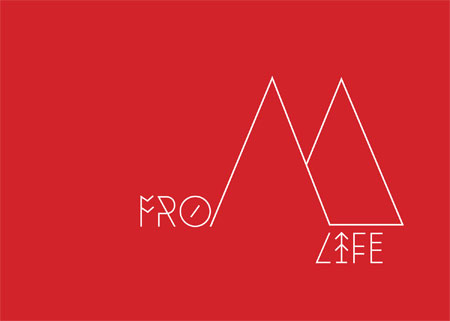
April 6- 28, 2012
Opening Reception: Friday, April 6, 6-9pm
Curated by: Zoe Pettijohn Schade and Christopher Schade
Andras Borocz, Marc Connor, Alec Dartley, Anna Ehrsam, Douglas Goldberg, Nancy Goldring, Everest Hall, Colin Hunt, Joshua Marsh, Israel Martinez, Zoe Pettijohn Schade, Christopher Schade, and Dan Sutherland.
Radiator Gallery is pleased to present From Life, a group exhibition on view from April 6- 28. The exhibition is guest curated by artists Zoe Pettijohn Schade and Christopher Schade and features works on paper, paintings, sculpture, and sound art from thirteen artists from Hungary, Mexico and the United States.
The curatorial theme of the show centers around the idea that contrary to nostalgic associations, the most compelling aspect of working from observation is that by definition one is engaging in the immediate present. The artists in the exhibition examine the complications of perception through the act of observation. These investigations do not necessarily result in realism. Instead, the work in the show is a testament to a range of interests and responses.
Several of the artists construct elaborate models that serve as experimental foundations for their work. Colin Hunt, Joshua Marsh, and Zoe Pettijohn Schade observe the strange and counter intuitive phenomena of light and space acting upon their perception. Nancy Goldring and Dan Sutherland take the specific visual cues embedded in what they are seeing and use it as a basis for abstraction. The resulting work lies in the realm between recognition of concrete reality and the ethers of the mind.
Marc Connor, Alec Dartley and Christopher Schade share this approach to abstraction and observation through landscape. Contrary to the controlled atmosphere of the studio, these artists immerse themselves in their subject and extract visual ideas from a sea of information.
The psychological and cultural associations of the observed subject are vital to the works of Andras Borocz, Anna Ehrsam, Douglas Goldberg, Everest Hall, and Israel Martinez. Each of these artists seeks to amplify the content implicit in the objects observed through the direct sampling, isolation, repetition and the intensity of their depiction. All of the artists in the exhibition use the limitations of the present material world as a means to gain insight.
ARTWORKS:
EXHIBITION:
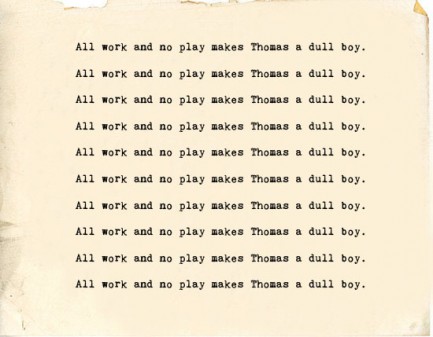
January 27th – February 18th, 2012
Curated by: Jean-Michel Ross
The second event will present the work of the following artists:
Itziar Barrio (Bilbao-New York)
Alex Clark (North Jersey)
Petros Chrisostomou (London-New York)
Gabriela Galvan (Mexico-New York)
Sarah Greig (Montreal)
Milutin Gubash (Montreal)
Theresa Mastroiacovo (Montreal)
Ève K. Tremblay (Montreal-New York-Berlin)
Kim Waldron (Montreal)
The second event will be a group show of artists that have contributed in defining the platform that is Galerie Thomas Henry Ross art contemporain. After two and a half months of research in residence at ISCP, it is now time to work, play and display artworks that have had an impact on the creation of this pop-up gallery. Gallery Radiator, a newly constituted space that defines itself as a radical mediator for the arts, has generously opened its doors for the project by providing a physical space for the exhibition. This collaboration will be the first official show of this new actor on the New York scene situated about two minutes from PS1 MOMA.
ARTWORKS:
OPENING RECEPTION:
We cannot display this gallery
PRESS RELEASE CHECKLIST